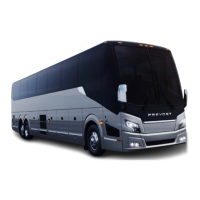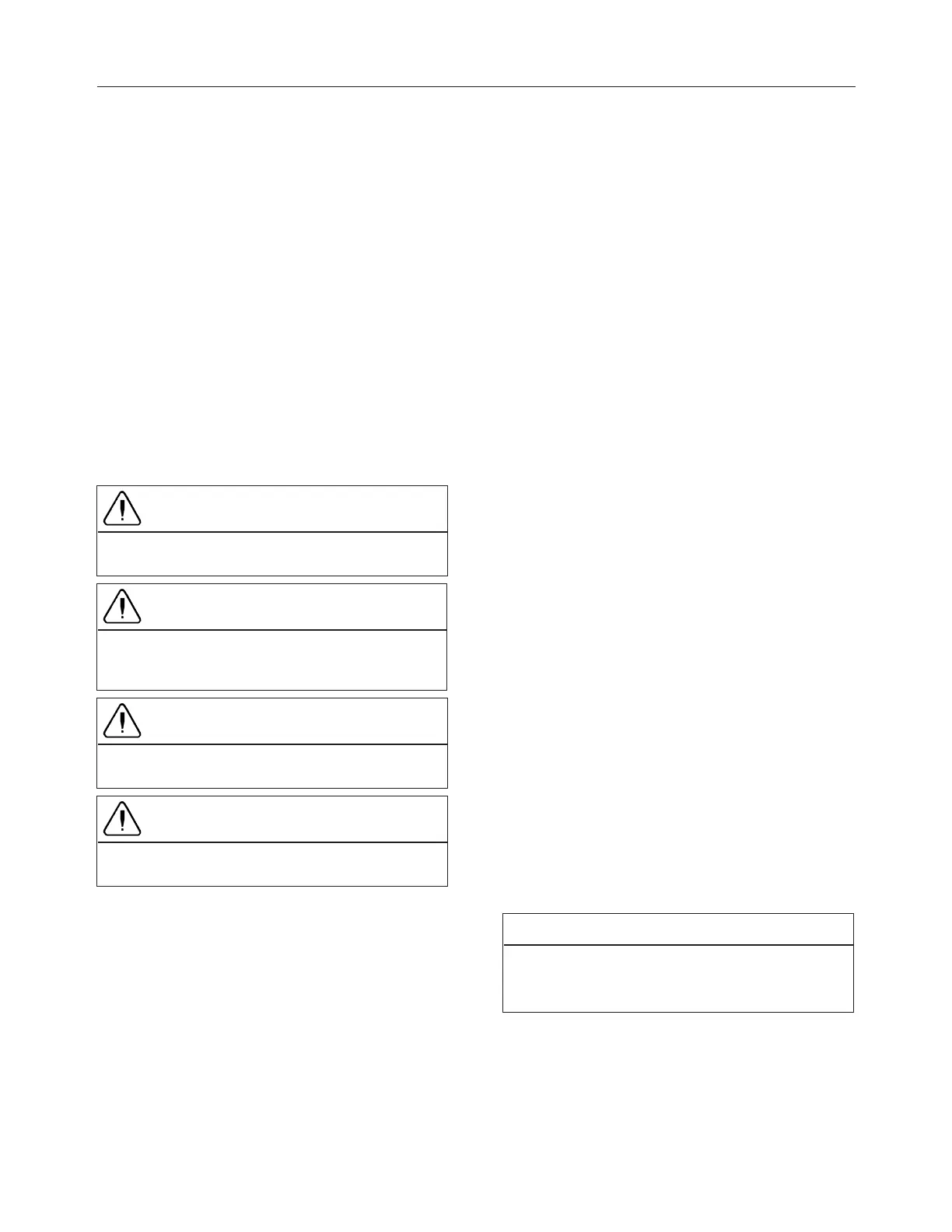Care and Maintenance 8-5
PA-1652 Operator's Manual H3-45 Coach
EXTERIOR SURFACES
Frequent washing and waxing of the vehicle
exterior will help protect the finish and luster. The
paint finish is attacked by the abrasive effects of
airborne particles and corrosive pollutants.
Before washing the exterior of the vehicle, close
the fresh air dampers using the “REC” button
located on HVAC control panel and on the air
intake duct in the evaporator compartment. Install
keyhole protectors to prevent water from
penetrating. Rinse vehicle with water to remove
all loose dirt. Wash vehicle using quality brand
car wash soap. Follow manufacturer's
recommendations for cleaning. Rinse well with
water.
The vehicle exterior should be cleaned, waxed
and buffed when water droplets no longer form on
the painted surfaces.
CAUTION
Hot water can damage paint. Keep water cool or
lukewarm.
CAUTION
Make sure cleaning solutions are not harmful to
painted surfaces. Read the manufacturer's
instructions before using.
CAUTION
Do not spray water jet directly into fresh air inlet
dampers.
CAUTION
Do not aim high pressure water jet at radiator or
condenser doors. This could damage the fins.
To prevent corrosion, remove caked-on dirt and
road salt from the vehicle underbody using a high
pressure water jet. Clean wheel housings,
bumpers, muffler, tailpipe and brackets.
Carry out corrosion prevention cleaning at least
twice a year. Spray underneath of the vehicle
and let soak before cleaning. Let engine and
exhaust system cool down before cleaning.
Tar Or Oil
Remove tar or oil as soon as possible with an
approved automotive tar and oil remover or
turpentine. Thoroughly clean area with car wash
soap and water. Let dry, then wax.
Insects
Remove insect stains as soon as possible with
lukewarm soap and water or insect remover.
Tree Sap
Remove tree sap or bird droppings with lukewarm
soap and water. Do not allow to harden.
WINDSHIELD
To prevent windshield wiper streaking, keep
silicone sprays away from windshield. Remove
road film and wax build- up from windows with
lukewarm soap and water or with an alcohol-
based cleaning agent. If a chamois is used to dry
and polish glass, use it exclusively for that
purpose.
Wiper Blades
To avoid tearing frozen wiper blades, loosen
them before removing. Remove and clean wiper
blades periodically with an alcohol- based
cleaning solution. Clean wiper blades using a
sponge or soft cloth.
LAVATORY MAINTENANCE
Flushed water from the lavatory is recirculated
from the lavatory waste water tank (if two lavatory
waste water tanks are installed, the top tank is the
main tank and the bottom one becomes the
auxiliary lavatory waste water tank). When the
main lavatory waste water tank is too soiled to be
recirculated, the driver can dump it into the
optional auxiliary lavatory waste water tank until a
suitable dump location can be reached. The main
lavatory waste water tank is then filled with clean
water and the process continues.
NOTE
The fresh water tank also drains into the
lavatory waste water tank. This should be
taken into account to avoid an overflow.
Routine draining and filling of lavatory tanks
should be performed by maintenance personnel
only, and should be done before parking the
coach overnight in freezing temperatures.

